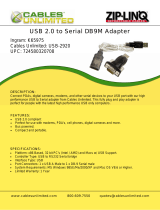
Hardware Guide
Welcome
6
nN
Welcome
Congratulations on purchasing a Sony VAIO desktop. Sony has combined leading-edge technology in audio,
video, computing and communications to provide you with state-of-the-art personal computing.
Here are the main features you can enjoy:
❑ Exceptional performance.
❑ Sony audio and video quality – The high-quality internal quality speakers and graphics and enable
you to take advantage of today’s advanced multimedia applications, games, and entertainment
software.
❑ Transformability – Stow away the keyboard and watch as the computer switches from PC to television
to sound system!
❑ Multimedia features – Enjoy audio and video CDs and DVDs, even record them yourself.
❑ Giga Pocket – Take advantage of the new Giga Pocket technology, allowing you to watch TV and
record your favourite programs digitally and by remote control.
❑ Sony Memory Stick slot – The next generation in digital storage allows you to easily transfer images,
sounds, data and text between cameras, computers, and more.
❑ VAIO keyboard – Featuring power-on capabilities and shortcut keys to launch your favourite
applications within seconds.
❑ Windows XP Home Edition with Service Pack 1 – Your system includes the latest consumer operating
system from Microsoft.
❑ Excellent customer support – If you are experiencing any problems with your computer, please check
the VAIO-Link website for a possible solution: http://www.vaio-link.com. Before contacting VAIO-Link,
please try to solve the problem by reading this guide, your printed Guide to Troubleshooting and
Using the VAIO Recovery and Documentation Disc, or the manuals and help files for the peripherals
or software.

























